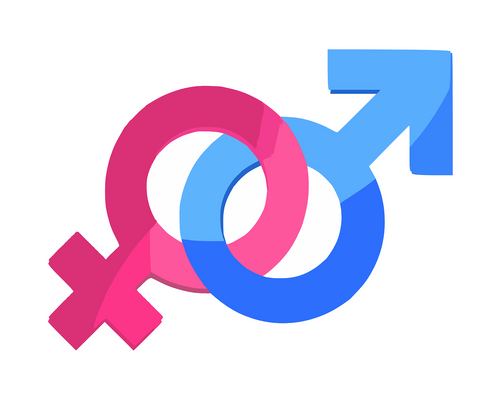4.1.2
Factors Influencing Voting in Elections
Factors Influencing Voting
Factors Influencing Voting
Voting in elections is influenced by factors including attachment to a particular party, the government’s competency and social factors including age, ethnicity and gender.


Partisanship
Partisanship
- Voters may choose to support a party because they strongly identify with that party.
- There has been partisan dealignment in the UK recently where voters have stopped identifying themselves with a particular party and have instead become floating voters who could vote for a number of parties.
- Disillusion and apathy explain the loss of party appeal to voters. It means that voters have become disengaged in politics and lack confidence in politicians to be able to solve important issues.


Class based voting
Class based voting
- Traditionally social class influenced who citizens voted for, with working class people supporting the Labour Party and the middle classes voting for the Conservatives.
- Class dealignment has taken place, with fewer voters identifying themselves as much with a specific political class. So, social class has less influence on voting.
- This can be explained by the increase in the size of the UK’s middle class, the decline in trade union power, the privatisation of industries and greater educational opportunities.


Governing competency
Governing competency
- Governing competency is how voters perceive the ability of each party to run the country effectively. This can influence voting decisions.
- The success of a government’s policy, including economic policy and strong leadership, affects how competent they appear to voters, whilst voters are also influenced by the potential governing competence of opposition parties.
- In 1997 John Major’s lack of competency was a factor in Labour winning the election.


Age
Age
- Traditionally older people support the Conservatives.
- This is thought to be because the Conservatives are most likely to protect the material interests of older people and because older people often vote less for major changes in society.
- But researchers are unsure of all of the reasons why older people tend to vote conservative.
- In 2017 Labour had 47% more support from voters aged 18-19 than Conservatives.
- Young people are less likely to vote than older people.
- In 2017 84% of people over 70 voted but only 57% of people aged 18-19 voted.


Region
Region
- Geographical region and where people live is an important influence on voting decisions.
- Voters in poorer areas of the country, such as the north of England and Wales, are more likely to support Labour.
- Voters in wealthier areas such as the south of England, except London, and rural areas more often support the Conservatives.


Ethnicity and Gender
Ethnicity and Gender
- Ethnic minorities are more likely to support Labour because Labour policies are often stronger in promoting a multi-cultural agenda.
- In 2017 65% of ethnic minorities supported Labour.
- Traditionally women were more likely to support the Conservatives than men because of the Conservatives' emphasis on the family, which was thought to be an important factor for women when choosing how to vote.
- More recently gender has been less significant in influencing voters.
- New Labour was supported by many women.
Voting Behaviour Patterns in 1979, 1997 and 2010
Voting Behaviour Patterns in 1979, 1997 and 2010
Social class, gender and age influenced voting behaviour in the 1979, 1997 and 2010 elections. These factors were of differing importance across the three elections.


Age: 1979, 1997 and 2010
Age: 1979, 1997 and 2010
- Age has become a more important factor in determining UK voting behaviour.
- In 1979 age was less significant, with a similar level of support for Labour (41%) and the Conservatives (42%) from voters aged 18-24.
- In 1997 many more younger people supported the Labour party with 49% of voters aged 18-24 and 25-34 voting for Labour.
- In 2010 there was a large difference among older voters, with 44% of voters aged over 65 supporting the Conservatives compared to 31% of voters supporting Labour.


Age in 2017 general election
Age in 2017 general election
- Age was very important in the 2017 general election, with most young people supporting Labour and most older voters supporting the Conservatives.


Gender: 1979 and 1997
Gender: 1979 and 1997
- The importance of gender in determining voter decisions has lessened in recent elections.
- In 1979, 47% of women supported the Conservatives compared to 35% of women supporting Labour.
- In 1997 more women supported Labour, with 44% voting for the party, and more men also supported Labour, with 45% voting for Labour compared to 31% for the Conservatives.


Gender: 2010
Gender: 2010
- In 2010 higher percentages of both men and women supported the Conservative party than any other party.
- In 2010 Labour and the Conservatives received similar levels of support across men and women.
- This suggests that gender has had less of an impact on voting behaviour in more recent years
1Democracy & Participation
1.1Representative & Direct Democracy
1.2Wider Franchise & Suffrage
1.3Pressure Groups & Other Influences
2Political Parties
2.1How Political Parties Work
2.2Established Political Parties
2.3Emerging & Minor Political Parties
3Electoral Systems
3.1Different Electoral Systems
3.2Referendums & How They Are Used
4Voting Behaviour & the Media
5Conservatism
5.1Conservatism: Core Ideas & Principles
5.2Conservatism: Differing Views & Tensions
6Liberalism
6.1Liberalism: Core Ideas & Principles
6.2Differing Views And Tensions Within Liberalism
7Socialism
7.1Socialism: Core Ideas & Principles
7.2Differing Views And Tensions Within Socialism
8The UK Constitution
8.1Nature & Sources of UK Constitution
8.2Constitutional Change since 1997
8.3Role & Powers of Devolved UK Bodies
9The UK Parliament
9.1Houses of Parliament
9.2Comparative Powers
9.3Legislative Process
10The Prime Minister & the Executive
10.1The Executive
10.2Ministerial Responsibility
10.3Prime Minister & the Cabinet
10.3.1Role of the Prime Minister
10.3.2Prime Minister's Powers
10.3.3Limits on the Prime Minister's Powers
10.3.4Role of the Cabinet
10.3.5Prime Minister & Cabinet: Relations
10.3.6Prime Minister & Cabinet: Balance of Power
10.3.7Prime Minister & Cabinet: Case Studies
10.3.8End of Topic Test - PM & Cabinet
10.3.9Top Grade AO3/4 - PM & Cabinet
11Relationships Between Government Branches
11.1The Supreme Court
11.2Parliament & Executive Relations
11.3The European Union & the UK
11.4Sovereignty in the UK Political System
12US Constitution & Federalism
12.1Nature of the US Constitution
12.2Principles of the US Constitution
12.3Federalism
13US Congress
13.1Structure of Congress
13.2Functions of Congress
14US Presidency
14.1Presidential Power
14.2The Presidency
14.3Interpretations & Debates of the US Presidency
15US Supreme Court & Civil Rights
15.1Nature & Role of Supreme Court
15.2Supreme Court Appointment Process
15.3The Supreme Court & Public Policy
15.4Protection of Civil Liberties & Rights
15.5Debates & Interpretations of the Supreme Court
16US Democracy & Participation
16.1Presidential Elections
16.2Electoral College
16.3Electoral Campaigns
16.4Incumbency
16.5Democrats & Republicans
16.6Internal Conflict & Ideology
16.7Support & Demographics
17Comparing Democracies
17.1Theoretical Approaches
17.2UK & USA Similarities & Differences
17.2.1Constitution: Nature
17.2.2Constitution: Provisions & Principles
17.2.3Federal System & Devolution
17.2.4Legislative: Lower Houses of Government
17.2.5Legislative: Upper Houses of Government
17.2.6Legislative: Powers & Functions
17.2.7Executive
17.2.8Supreme Court
17.2.9Supreme Court: Judicial Independence
17.2.10Civil Rights
17.2.11Civil Rights: Interest Groups
17.2.12Party Systems & Parties
17.2.13Campaign Finance & Pressure Groups
17.2.14End of Topic Test - Comparing UK & US
17.2.15Application Questions - UK & USA
18Feminism
18.1Feminism: Core Ideas & Principles
18.2Different Types of Feminism
19Nationalism
19.1Nationalism: Core Ideas & Principles
19.2Different Types of Nationalism
Jump to other topics
1Democracy & Participation
1.1Representative & Direct Democracy
1.2Wider Franchise & Suffrage
1.3Pressure Groups & Other Influences
2Political Parties
2.1How Political Parties Work
2.2Established Political Parties
2.3Emerging & Minor Political Parties
3Electoral Systems
3.1Different Electoral Systems
3.2Referendums & How They Are Used
4Voting Behaviour & the Media
5Conservatism
5.1Conservatism: Core Ideas & Principles
5.2Conservatism: Differing Views & Tensions
6Liberalism
6.1Liberalism: Core Ideas & Principles
6.2Differing Views And Tensions Within Liberalism
7Socialism
7.1Socialism: Core Ideas & Principles
7.2Differing Views And Tensions Within Socialism
8The UK Constitution
8.1Nature & Sources of UK Constitution
8.2Constitutional Change since 1997
8.3Role & Powers of Devolved UK Bodies
9The UK Parliament
9.1Houses of Parliament
9.2Comparative Powers
9.3Legislative Process
10The Prime Minister & the Executive
10.1The Executive
10.2Ministerial Responsibility
10.3Prime Minister & the Cabinet
10.3.1Role of the Prime Minister
10.3.2Prime Minister's Powers
10.3.3Limits on the Prime Minister's Powers
10.3.4Role of the Cabinet
10.3.5Prime Minister & Cabinet: Relations
10.3.6Prime Minister & Cabinet: Balance of Power
10.3.7Prime Minister & Cabinet: Case Studies
10.3.8End of Topic Test - PM & Cabinet
10.3.9Top Grade AO3/4 - PM & Cabinet
11Relationships Between Government Branches
11.1The Supreme Court
11.2Parliament & Executive Relations
11.3The European Union & the UK
11.4Sovereignty in the UK Political System
12US Constitution & Federalism
12.1Nature of the US Constitution
12.2Principles of the US Constitution
12.3Federalism
13US Congress
13.1Structure of Congress
13.2Functions of Congress
14US Presidency
14.1Presidential Power
14.2The Presidency
14.3Interpretations & Debates of the US Presidency
15US Supreme Court & Civil Rights
15.1Nature & Role of Supreme Court
15.2Supreme Court Appointment Process
15.3The Supreme Court & Public Policy
15.4Protection of Civil Liberties & Rights
15.5Debates & Interpretations of the Supreme Court
16US Democracy & Participation
16.1Presidential Elections
16.2Electoral College
16.3Electoral Campaigns
16.4Incumbency
16.5Democrats & Republicans
16.6Internal Conflict & Ideology
16.7Support & Demographics
17Comparing Democracies
17.1Theoretical Approaches
17.2UK & USA Similarities & Differences
17.2.1Constitution: Nature
17.2.2Constitution: Provisions & Principles
17.2.3Federal System & Devolution
17.2.4Legislative: Lower Houses of Government
17.2.5Legislative: Upper Houses of Government
17.2.6Legislative: Powers & Functions
17.2.7Executive
17.2.8Supreme Court
17.2.9Supreme Court: Judicial Independence
17.2.10Civil Rights
17.2.11Civil Rights: Interest Groups
17.2.12Party Systems & Parties
17.2.13Campaign Finance & Pressure Groups
17.2.14End of Topic Test - Comparing UK & US
17.2.15Application Questions - UK & USA
18Feminism
18.1Feminism: Core Ideas & Principles
18.2Different Types of Feminism
19Nationalism
19.1Nationalism: Core Ideas & Principles
19.2Different Types of Nationalism
Unlock your full potential with Seneca Premium
Unlimited access to 10,000+ open-ended exam questions
Mini-mock exams based on your study history
Unlock 800+ premium courses & e-books

